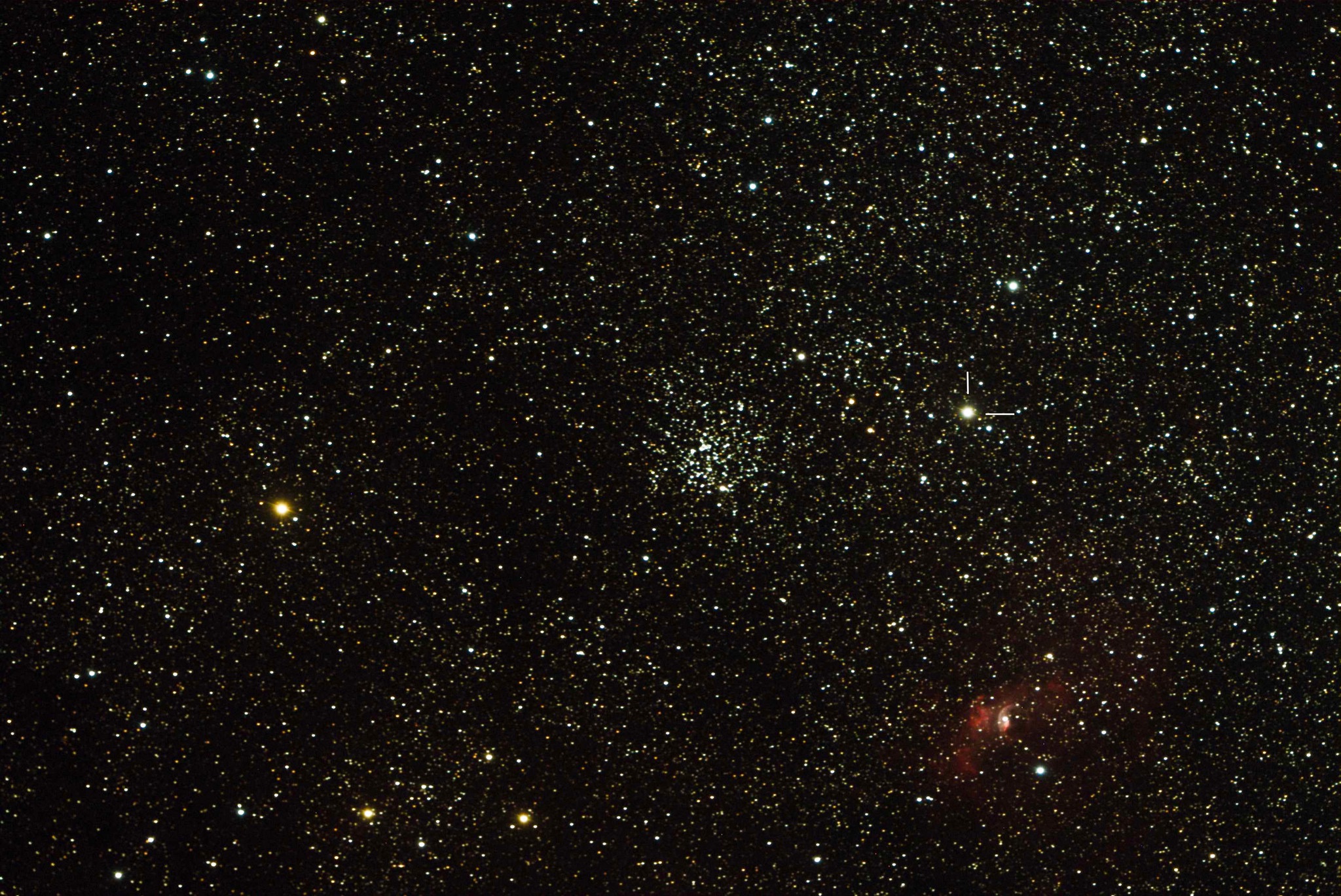By Eliot Herman | 2021-05-11

On 05/10/2021 11:00 pm by Rudy Kokich| Virginia
NGC5981, NGC5982, NGC5985 (Draco Galaxy Triplet), Draco
This less well known galaxy triplet is composed of NGC5985, NGC5982, and NGC5981. The first two members were discovered by William Herschel in 1788, while the third, smaller member was first reported in 1850 by J.Stoney, working with Earl of Rosse's 72 inch reflector. Similar redshift based distances suggest the three galaxies form a loose gravitational association. However, they are not catalogued as a "compact group" because they do not manifest conspicuous morphological or kinematic peculiarities, or evidence of starburst activity caused by close tidal interactions. The triplet lies in a field strewn with small, remote galaxies, most of which have no identifier, and none of which have documented redshifts in SIMBAD and NED databases. NGC5976, a distant lenticular galaxy, is the most prominent of these background galaxies. Unfortunately, in the absence of redshift data it is not possible to estimate its distance and physical properties.
NGC5985 is a nearly face-on barred spiral galaxy of morphological type SBbc. Spectroscopy of its nuclear region in visible and infrared light reveals bright emission lines of hydrogen, helium, nitrogen, and oxygen, suggesting an active galactic nucleus (AGN) of the Seyfert type. Such nuclei are powered by accretion disks around central supermassive black holes. Since the nucleus is obscured by gas and dust, it does not appear prominent in the visible band, but it exceeds in brightness the rest of the galaxy in the infrared. Hairlike streamers of luminous matter arise from the western spiral arm, possibly drawn out during a distant gravitational interaction with a neighboring galaxy. Based on its measurable properties (redshift, apparent magnitude, angular diameter), NGC5985 is about 150,000 light years in diameter, 0.37 times the brightness of the Milky Way, and lies at a distance of 116 million light years, receding at 2,499 km/s.
NGC5982 is an elliptical galaxy of the E3 morphological type. It also has an AGN with a LINER region (low-ionization nuclear emission-line region) powered by a central supermassive black hole estimated at 830 million solar masses. Spectroscopic studies reveal that the nucleus is kinematically decoupled from the galactic envelope, rotating at nearly 90* relative to the rest of the galaxy. Infrared photography reveals that the envelope is composed of at least 24 well defined shells of gas and dust distribution. These features are thought to be a result of several galaxy mergers. Based on its measurable properties, we can estimate NGC5982 to be 192,000 light years in diameter, roughly as bright as the Milky Way, and to lie at a distance of 133.4 million light years, receding at 2,882 km/s.
NGC5981 is a smaller spiral galaxy seen from the edge-on perspective. It has a lower new star formation rate than expected. This is presumably due to a large dark matter halo which quenches new star formation through a process called "virial shock heating", whereby surrounding gas descends into the galaxy too rapidly to allow for sufficient cooling and condensation into stars. The galaxy is about 100,000 light years in diameter, one eighth the brightness of the Milky Way, and lies at a distance of 120 million light years, receding from us at 2,579 km/s due to the expansion of the Universe.
Perhaps the most remarkable object in the field is quasar SDSS J153753.97+593114.2. SIMBAD database lists its apparent magnitude as 19.1 (g), but it looks much brighter on the photograph. DSS2 sky survey lists the object's apparent magnitude as 17.3. Redshift of 2.219 indicates light travel distance of about 10.72 billion light years and relativistic recession velocity of 247,021 km/s (at the time the light we now observe was emitted). In the present epoch, its proper distance is 18.06 billion light years, well beyond the cosmic event horizon, and its proper recession velocity is superluminal at 390,148 km/s. The light the quasar is presently emitting can never reach us. Assuming apparent magnitude of 17.3 and no gravitational lensing, the quasar's absolute magnitude is -30.69, about 9,000 times brighter in the visible band than the entire Milky Way galaxy.
-Meade 8'' ACF telescope, AP 0.7x telecompressor, 200x1400mm
-Canon T3i modified camera, Astronomik L3 filter
-iEQ30pro mount, Orion 60mm f4 SSAGpro autoguider
-31 x 300 sec subexposures, 5 discarded, iso1600, processed with 30 dark and 30 bias frames
-Software: PHD2, DSS, Xniew, StarNet++, and StarTools v 1.3 and 1.7

